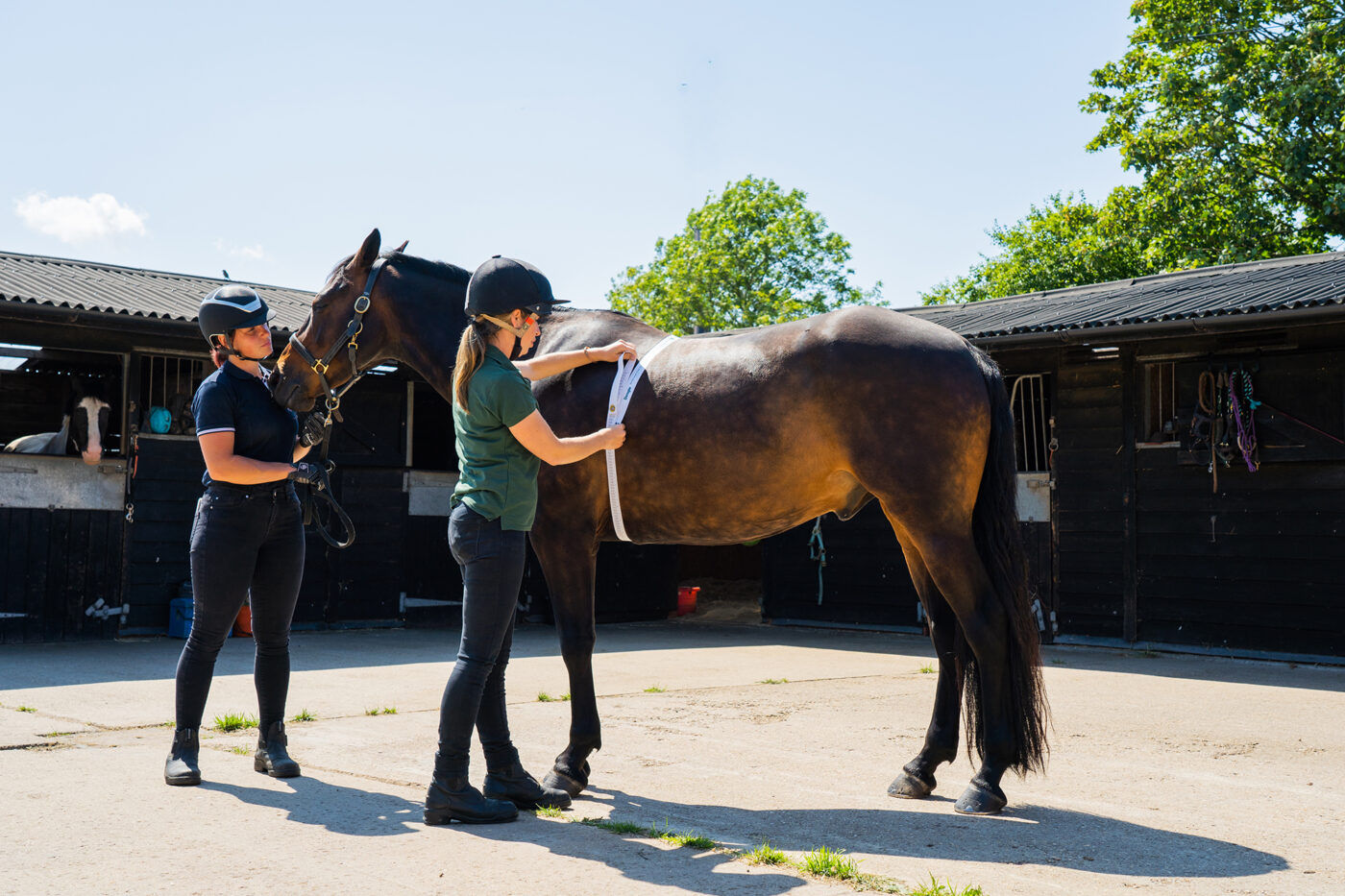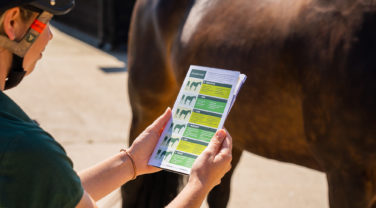How accurate is your weigh tape?
Our nutrition team have recently carried out a preliminary study comparing the accuracy of 3 different weigh tapes. The initial finding is that they vary by 20% or more from weighbridge readings, generally underestimating bodyweight especially on bigger horses.
Weigh tapes are an easily accessible way to monitor a horse’s weight and a survey of 650 people we carried out in 2021, found that 72% of respondents used a weigh tape on their horse. Of these, 25% used them weekly and 26% monthly. Regular monitoring is important as part of a weight management plan to help horse owners track changes in their horse’s bodyweight. If tapes are generally underestimating a horse’s weight it may well be contributing to the difficulties horse owners have in recognising obesity which is why we wanted to explore this area further.

Three different brands of weigh tapes, each with varying scales, were compared with weighbridge readings. 29 horses were used in the study ranging from 13hh to 17.2hh with body condition scores 2.5-4.5 on a five-point scale.
Larger horses tended to be underestimated to a greater extent than ponies, with the biggest difference recorded for a 17.2hh mare who was 138kg less on one weigh tape reading compared to the weighbridge, a 21% difference! The closest weigh tape reading was still 104kg less than her actual bodyweight.
Overestimating bodyweight on a weigh tape was much less common with only 5 readings from the entire study being overestimated, some of which being the same horse. The greatest overestimate of the study was only 19kg, a 5.4% difference. This is in line with results from Grimwood et al. (2023) which found that the weigh tape used in their study typically underestimated bodyweight, more so for bigger horses. This is particularly interesting as the Dengie study used three different types of weigh tape rather than just one used in the 2023 study.

Different tapes were found to vary by up to 10% in their readings for the same horse at the same time which would equate to a difference of 50kg for a 500kg horse. Although the study was done on a relatively small scale, it provides further support for the importance of horse owners using the same tape every time when monitoring changes in bodyweight. The graph indicates all three weigh tapes showing how they compare to the weighbridge value for each individual horse. Each coloured dot represents a weigh tape reading with different colours representing different tapes used. The red diagonal line is the identity line which shows the point at which an identical reading would be seen between the tape and the bridge.

At Dengie, we provide a weighbridge service which can be a great opportunity for horse owners to compare their own weigh tape with the weighbridge reading. Interestingly, 56% of horses and ponies who attended a Dengie weighbridge clinic in 2023 were overweight which reflects levels of obesity regularly cited in the literature. Whilst weight is just a number and body fat/condition score is arguably more useful in the context of obesity issues, a correct weight is important for ensuring sufficient forage intake is maintained and determining feeding rates. Further work is planned, particularly looking at the accuracy of tapes for those that are overweight.
For more information about Dengie’s weighbridge service click here. If you would like information about our feeds or help and advice on all aspects of feeding call the Dengie Feedline: 01621 841188 or complete our Feed Advice Form.


